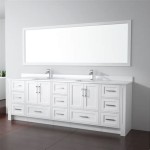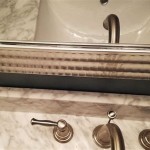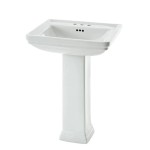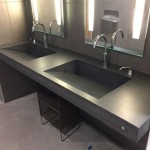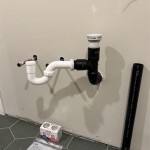What to Use to Unclog a Bathroom Sink
A clogged bathroom sink is a common household problem. The accumulation of hair, soap scum, toothpaste residue, and other debris can restrict the flow of water, leading to inconvenience and potential mess. Understanding the various methods and tools available for unclogging a sink is essential for maintaining a smoothly functioning plumbing system. This article provides a detailed overview of techniques and implements used to address sink clogs, empowering homeowners to confidently tackle this frequent plumbing issue.
Preventive Measures: Avoiding the Clog
Proactively preventing clogs is often easier and less time-consuming than addressing them after they form. Implementing several preventive strategies can significantly reduce the frequency of sink blockages. One key step is the installation of a sink strainer. This inexpensive device catches hair and larger debris before they enter the drainpipe. Strainers are readily available in various materials and sizes, making it easy to find one appropriate for any bathroom sink. Regularly cleaning the strainer is crucial to its effectiveness, as a full strainer will not effectively capture debris.
Another preventive measure is being mindful of what is flushed down the drain. Avoid disposing of items such as thick lotions, excessive amounts of toothpaste, and small objects that could accumulate and contribute to clogs. Educating household members about proper sink usage can significantly minimize the risk of blockages. Periodic flushing of the drain with hot water can also help to dislodge any grease or soap buildup before it hardens and forms a clog.
Routine maintenance, such as yearly plumbing inspections, can also help prevent larger problems that might be perceived as a "clog" but are stemming from a different plumbing issue. Regular inspections can help spot corroded pipes or other such issues that might be mistaken for a clogged sink. Addressing these issues proactively will help prevent more severe plumbing issues down the road.
Non-Chemical Unclogging Methods
Before resorting to chemical drain cleaners, it's prudent to explore non-chemical methods for unclogging a bathroom sink. These methods are generally safer for the environment and less likely to damage plumbing fixtures. Several effective non-chemical options exist, ranging from basic physical tools to more involved methods.
Using a Plunger: A cup plunger is a simple yet effective tool for dislodging clogs. Ensure there is standing water in the sink to create a seal around the drain opening. Place the plunger over the drain opening, ensuring a tight seal. Vigorously plunge up and down for approximately 20-30 seconds, maintaining the seal. Remove the plunger and check if the water drains freely. Repeat the process if necessary. For sinks with an overflow opening, it’s crucial to block the overflow with a wet cloth or tape to maintain suction and maximize the plunger's effectiveness. If the initial plunging attempts are unsuccessful, add more water to the sink and try again.
Employing a Plumbing Snake (Drain Auger): A plumbing snake, also known as a drain auger, is a flexible tool designed to reach further into the drainpipe and break up or retrieve clogs. Insert the snake into the drain opening and carefully feed it down the pipe, rotating the handle to navigate bends. When resistance is encountered, indicating the presence of a clog, continue rotating the snake to break up the blockage or to hook and pull it out. Once the snake has moved past the clog, retract it slowly, removing any debris that is attached. Flush the drain with hot water to clear any remaining residue. Plumbing snakes are available in various lengths and materials, suitable for different types of clogs and pipe configurations.
Hot Water Flush: Sometimes, a simple hot water flush can dissolve minor clogs comprised of grease or soap buildup. Boil a kettle of water and carefully pour it down the drain, avoiding splashing. The hot water helps to melt away grease and dislodge soap scum, allowing the drain to flow freely. If the sink is porcelain or the pipes are PVC, it's advisable to use hot tap water instead of boiling water, as extreme temperature changes could potentially damage these materials. This method is most effective for recent or minor clogs.
Baking Soda and Vinegar Solution: This natural and cost-effective solution can often dissolve mild clogs. Pour one cup of baking soda down the drain, followed by one cup of white vinegar. The mixture will create a fizzing reaction. Let it sit for approximately 30 minutes, allowing the mixture to break down accumulated debris. After 30 minutes, flush the drain with hot water to clear the solution and any dislodged material. For stubborn clogs, repeat the process or allow the solution to sit overnight before flushing. The combination of baking soda and vinegar creates a chemical reaction that helps to loosen clogs without the harshness of commercial drain cleaners.
Chemical Drain Cleaners: Use and Precautions
Chemical drain cleaners are powerful substances designed to dissolve or break down clogs in drainpipes. While effective, they should be used with caution due to their potential to damage plumbing fixtures and pose health risks. It's essential to understand the different types of chemical drain cleaners and how to use them safely and effectively.
Types of Chemical Drain Cleaners: Chemical drain cleaners generally fall into three categories: caustic, oxidizing, and acid-based. Caustic drain cleaners, such as those containing sodium hydroxide (lye), generate heat to dissolve grease and hair. Oxidizing drain cleaners, containing ingredients like bleach or nitrates, create oxygen to break down organic matter. Acid-based drain cleaners, typically containing sulfuric acid, are the most powerful and are generally used for severe clogs. It's important to choose the appropriate type of drain cleaner based on the nature and severity of the clog.
Proper Usage of Chemical Drain Cleaners: Before using any chemical drain cleaner, carefully read and follow the manufacturer's instructions. Wear appropriate protective gear, including gloves and eye protection, to prevent skin and eye irritation. Pour the recommended amount of drain cleaner down the drain, avoiding splashing. Allow the cleaner to sit for the specified amount of time, usually 15-30 minutes, before flushing with cold water. Never mix different types of drain cleaners, as this can create hazardous fumes or explosive reactions. Ensure proper ventilation in the bathroom while using chemical drain cleaners.
Precautions and Risks: Chemical drain cleaners can damage pipes, especially older or fragile plumbing systems. Repeated use can corrode pipes, leading to leaks or even pipe failure. These cleaners can also be harmful to the environment if they enter the water supply. Furthermore, chemical drain cleaners can cause serious burns if they come into contact with skin or eyes. Inhaling the fumes can irritate the respiratory system. If a chemical drain cleaner fails to unclog the drain, it's best to consult a professional plumber to avoid further damage or injury. Also, be aware that if you end up calling a plumber after the usage of a chemical drain cleaner, you must inform them of the chemicals used in the drain, as mixing certain chemicals can be dangerous.
Disassembling and Cleaning the P-Trap
The P-trap is a curved section of pipe located under the sink that traps debris and prevents sewer gases from entering the bathroom. It is a common location for clogs to form. Disassembling and cleaning the P-trap can often resolve stubborn sink clogs.
Preparation and Safety: Before disassembling the P-trap, place a bucket or container under it to catch any water and debris that may spill out. Wear gloves to protect your hands from dirt and grime. Turn off the water supply to the sink to prevent accidental flooding. Have a wrench and screwdriver readily available for loosening and tightening connections.
Disassembly Process: Carefully loosen the slip nuts that connect the P-trap to the drainpipe and tailpiece. These nuts are usually hand-tightened, but may require a wrench if they are particularly tight. Once the nuts are loosened, gently remove the P-trap from the plumbing system. Be prepared for water and debris to spill out. Inspect the P-trap for any visible clogs or obstructions.
Cleaning the P-Trap: Thoroughly clean the P-trap by rinsing it with water and removing any trapped debris. Use a small brush or tool to scrub away any stubborn residue. Inspect the drainpipe and tailpiece for any additional clogs and remove them as necessary. Ensure that all components are clean and free from obstructions before reassembling the P-trap.
Reassembly and Testing: Reassemble the P-trap by carefully connecting it to the drainpipe and tailpiece. Tighten the slip nuts securely, but avoid over-tightening, which could damage the fittings. Turn on the water supply and check for leaks around the connections. If any leaks are detected, tighten the nuts further or replace the washers if necessary. Once the P-trap is successfully reassembled and leak-free, run water down the drain to ensure it is flowing freely.
When to Call a Professional Plumber
While many sink clogs can be resolved using the methods described above, certain situations warrant the intervention of a professional plumber. Attempting to address complex plumbing issues without the necessary expertise and equipment can potentially lead to further damage and costly repairs.
Persistent or Severe Clogs: If multiple attempts to unclog the sink using various methods prove unsuccessful, it may indicate a more significant or deeply rooted blockage. Recurring clogs may signal an underlying plumbing problem, such as a partially collapsed pipe or a buildup of scale and mineral deposits. In these cases, a professional plumber can diagnose the cause of the clog and implement appropriate solutions.
Suspected Pipe Damage: If there are signs of pipe damage, such as leaks, corrosion, or weakened joints, it's crucial to consult a plumber immediately. Attempting to repair damaged pipes without the necessary skills and materials can exacerbate the problem and potentially lead to water damage or structural issues. A professional plumber can assess the extent of the damage and perform necessary repairs or replacements.
Unknown Plumbing System: If the plumbing system in the home is old or unfamiliar, it can be difficult to determine the appropriate methods for unclogging a sink without potentially causing damage. Older pipes may be more fragile and susceptible to damage from harsh chemicals or aggressive unclogging techniques. A professional plumber can assess the plumbing system and recommend the safest and most effective methods for addressing clogs.
Lack of Expertise or Confidence: If there is a lack of confidence in ability to address a sink clog safely and effectively, it's best to consult a professional plumber. Attempting to tackle plumbing repairs without the necessary knowledge and skills can result in mistakes that could cause further damage or injury. A professional plumber can provide expert assistance and ensure that the sink is unclogged properly and safely.

5 Natural Ways To Unclog A Bathroom Sink Hiller How
How To Unclog A Sink 4 Easy Ways

How To Unclog A Bathroom Sink Hana S Happy Home

How To Unclog A Sink The Right Way

Simple Bathroom Sink Drain Cleaner The Family Handyman

How To Unclog A Slow Running Bathroom Sink Drain 10 Options

Expert Plumbing Tip How To Unclog A Bathroom Sink Garden City Useful Information

How To Clear A Clogged Drain Reviews By Wirecutter

How To Unclog A Bathroom Sink Quickly

How To Unclog A Slow Running Bathroom Sink Drain 10 Options
Related Posts
